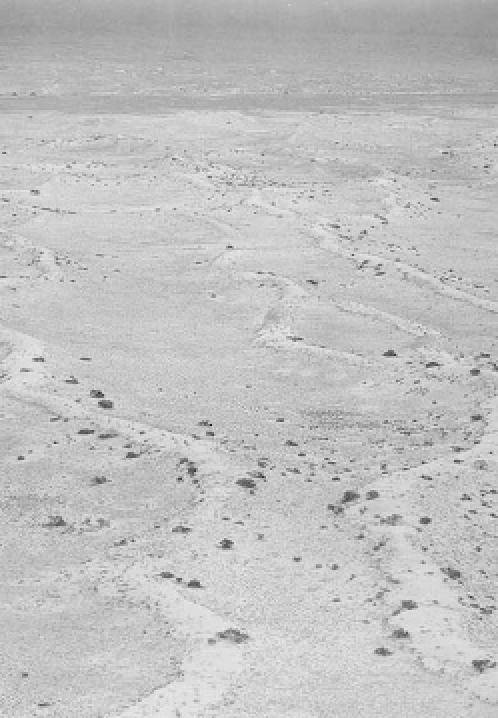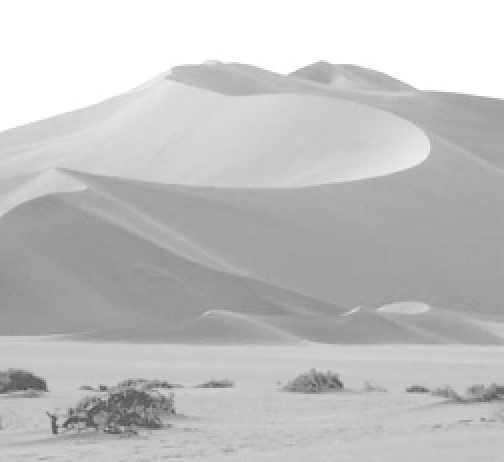Geology Reference
In-Depth Information
Plate 12.7
A large star dune, over 200 m high, near Sossus
Vlei in the Namib Desert.
(
Photograph by Dave Thomas
)
and are very common in coastal dunes and in stabilized
(vegetated) dunes around desert margins.
Plate 12.6
Partially vegetated and sinuous linear dunes in
the south-west Kalahari.
(
Photograph by Dave Thomas
)
Dunefields and sand seas
Dunefields
are accumulations of sand, occupying areas
of less than 30,000 km
2
with at least ten individual
dunes spaced at distances exceeding the dune wave-
length (Cooke
et al
. 1993, 403). They contain relatively
small and simple dunes. They may occur anywhere that
loose sand is blown by the wind, even at high latitudes,
and there are thousands of them. In North America,
dunefields occur in the south-western region, and in
intermontane basins such as Kelso and Death Valley,
California.
Sand seas
differ from dunefields in covering areas
exceeding 30,000 km
2
and in bearing more complex and
bigger dunes. In both sand seas and dunefields, ridges or
mounds of sand may be repeated in rows, giving the sur-
face a wavy appearance. About 60 per cent of sand seas are
dune-covered, while others may be dune-free and com-
prise low sand sheets, often with some vegetation cover.
Sand seas have several local names: ergs in the north-
ern Sahara,
edeyen
in Libya,
qoz
in the Sahara,
koum
or
Plants may act as foci for dune formation, and three
types of dune are associated with vegetation. The com-
monest type of plant-anchored dune is
vegetated sand
mounds
, also known as
nabkha
,
nebkha
, shrub dunes,
or hummock dunes (Plate 12.9). These form around a
bush or clump of grass, which acts as an obstacle for sand
entrapment.
Parabolic dunes
,or
'hairpin' dunes
,are
U-shaped or V-shaped in plan with their arms opening
upwind. They are common in vegetated desert margins.
In the Thar Desert, India, they may attain heights of
many tens of metres. They are also found in cold climates,
as in Canada and the central USA, and at coastal sites. As
to their formation, it is generally thought that parabolic
dunes grow from blowouts.
Blowouts
are depressions
created by the deflation of loose sand partly bound by
plant roots. They are bare hollows within vegetated dunes


